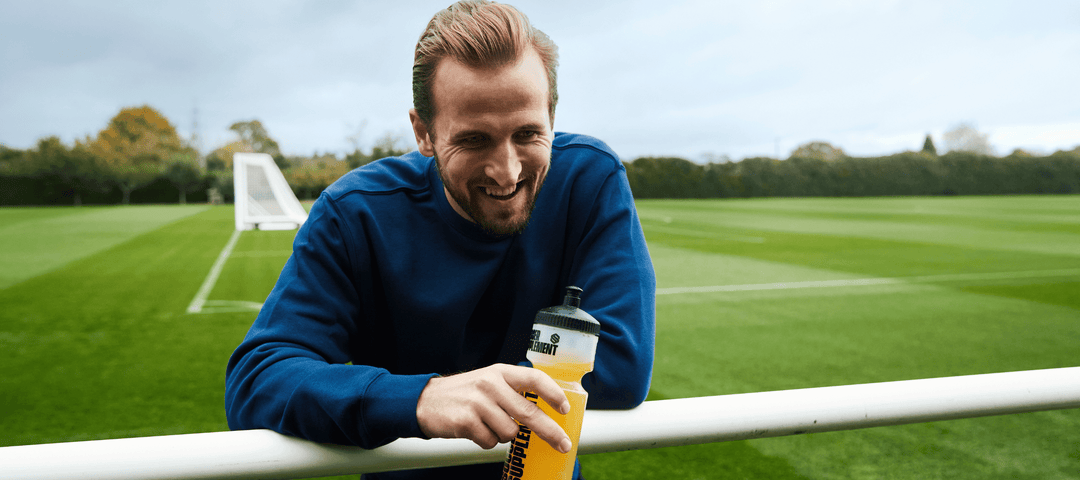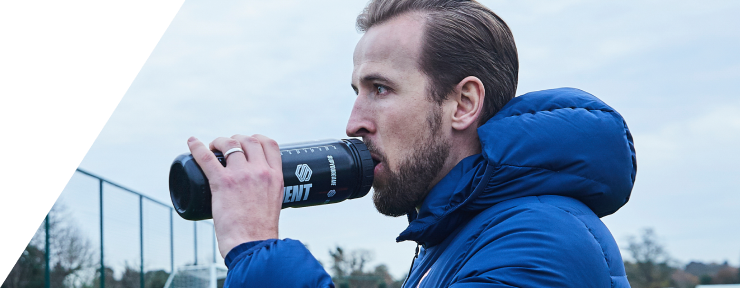Ankle injuries are something we will all suffer at some point in our footballing journeys; ranging from the very mild twisted ankle, or "ankle roll", all the way to torn ankle ligaments, tendons and broken bones. In this article we will start by looking at what causes an injury to occur, then more dive into the specifics of the ankle and how we can begin to bulletproof our own!
We should begin by saying we are concentrating on non-contact injuries here, there really is little you can do to prevent a contact injury. Non-contact injury is essentially when the particular structure in your body runs out of capacity to cope with what is being asked to do.
Take a road car with a formula one engine in it, you might be able to travel quickly in a straight line but as soon as your standard brakes, steering or suspension are asked to harness that newfound power, something is going to go wrong in a hurry! In the same way, if we squat and deadlift until the cows come home, great from an upper leg output perspective, but we need to train the ankles to cope with this.
Prevention Training
The crucial function of the ankles is to react and harness. What do we mean by that?
Reacting is landing from headers, sprinting on uneven ground, changing direction quickly; the ankle needs to stabilise and stabilise QUICKLY in these situations (you’ll remember a time when your ankle didn’t as this is when you will have encountered an ankle roll).
Harnessing is transfering the power created from around the hips into the ground to help us jump, sprint, turn faster than we were before; if we go back to the car analogy imagine a formula one car with 4x4 suspension, it will just bounce all over the place. Here are a few options to help your ankles react and harness from the comfort of your own home.
#1 Single leg balancing
The single leg balance is the level 1 of stability training for the ankle’s reactivity. There are a few ways we can increase the difficulty to match the needs of the individual undertaking the exercise however! The most basic would be quite simply standing on one leg and holding for a specified time period. A level up from that would be repeating the exercise with your eyes closed, more challenging than that would be eyes closed with a cushion under foot.
#2 Pogo jumps
As bizarre as they sound? Yep. Pogo jumps are a great way to increase stiffness in the ankle, they work by first performing a countermovement jump then performing a number of jumps (could be 5/10/15 depending on your fitness level) keeping your lower body as stiff as possible, you essentially lift your toes up each time you hit the ground to try and limit the ‘flex’ in them. The aim of the game here is jump high and don’t be on the ground for long! Disclaimer – you will need a basic level of strength before attempting these as any form of plyometric can be very taxing on your body!
#3 Hopping
Hopping is something we traditionally do in the playground and then drop once we leave primary school! This shouldn’t be the case however; hopping is a great tool with which to train the structures of your ankle. Varying the hopping will challenge your ankle in different ways, example being hopping forwards slowly is quite an easy option; conversely hopping laterally (in and out left to right) on one leg as fast as possible puts quite a strain on the ankle. Hop fast, slow, sideways, forwards, backwards … in every which way possible to challenge your ankle appropriately.
When building up your ankle ligaments, try taking a Collagen shot 45 minutes before doing the exercise, this will get Collagen (a major connective tissue building block) to the ligaments and tendons that we're trying to build up and make stronger.
Rehabilitation Training
The stages of rehabilitation (post-diagnosis and treatment - check out our guide on How To Treat Minor Football Injuries), for any injury will follow a similar flow.
If we use the classic ‘torn ligament in ankle’ diagnosis as a starting point. The first stage (once inflammation has largely run its course) is movement; regaining the movement in the ankle following trauma is a crucial part of the process to ensure no long-term movement impairments are ingrained. First steps are being able to point your toes up (AKA Dorsi-Flexion) and point your toes down (AKA Plantar-Flexion) without too much pain.
Once that is mastered, we move onto lateral movements; can you twist your ankle from side to side without too much pain? Next step is repeating with resistance (think some form of thera band as this works well!).
After we have ticked these boxes, we can then begin to move into the more challenging movements mentioned above; first would come the single leg balancing and variations of shallow single leg squats – before more demanding eyes closed variations would be introduced. It is at this stage some single leg strength training can be helpful, deep single leg squats, Bulgarian split squats, reverse lunge and knee drive – all good examples of challenging the strength and stability of the ankle. Once you can achieve this with appropriate load the fun stuff comes out, firstly the hopping variations (start with slow speed back to front before progressing into faster side to side movements) and pogo jumps!
Don't forget the Collagen or Omega 3 either! If you're healing and building your ankle back up to full function, having the correct building blocks readily available can speed the process up.
Now what?
Now you've got your stable base back, and your ankles are feeling bulletproof, what are you going to do with them? Check out our article on How To Be More Agile, and take your rehab or prehab training up a notch.
Hopefully this article has provided a whistle stop tour of ankle injury prevention and rehabilitation techniques. Keep your eyes peeled in the coming weeks for ‘knee injury prevention and rehabilitation’, as well as ‘hip injury prevention and rehabilitation’ to try and maximise your minutes on the field!








